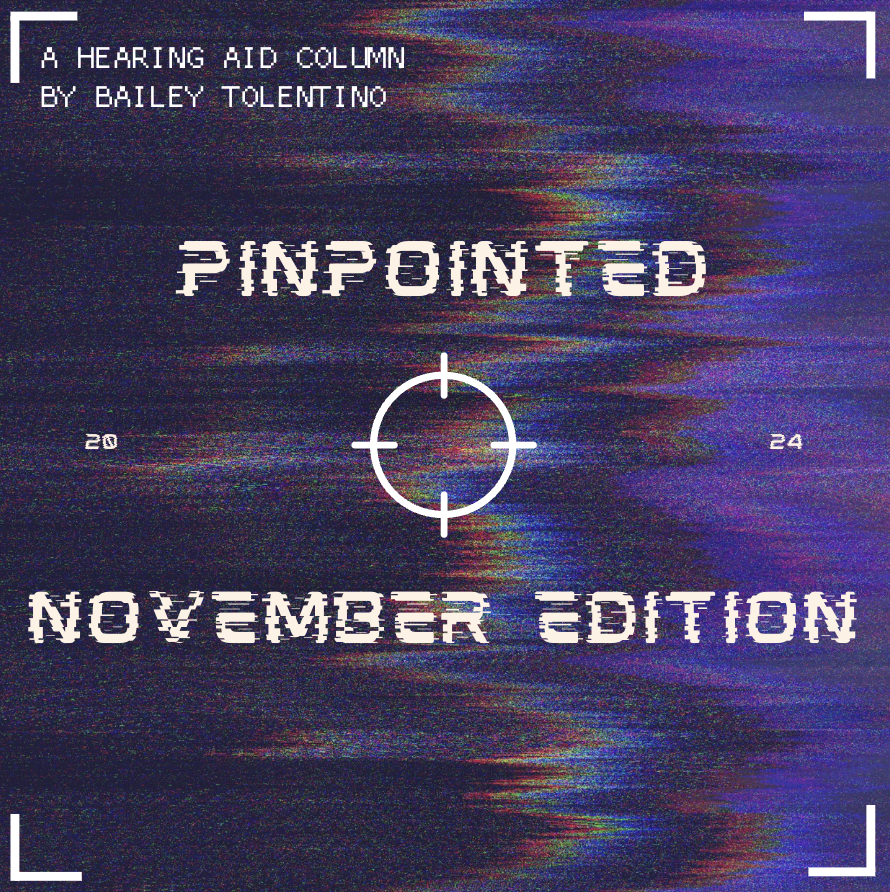Pinpointed: Oh So Romantic!
By Bailey Tolentino
In the last edition of Pinpointed, I focused a lot on the structures and narratives of a handful of songs, and how those aspects influence music. It was a more literary approach to music, but this month, I’ll be focusing more on actual melodies and some simple music theory. These songs all have addictive melodies, but it is not due to their lead vocals, it is because of their chord progressions. I won’t be deep-diving into every single song on this list, as there are so many. However, if you listen to any (or all) of these back to back, you’ll pick up on the way the instrumentals follow some sort of similar melodic pattern.
Love On The Brain - Rihanna
Lover - Taylor Swift
Kill Bill - SZA
Stand By Me - Ben E. King
Every Breath You Take - The Police
Moonlight - Ariana Grande
Fade Into You - Mazzy Star
The Louvre - Lorde
The Scientist - Coldplay
happier - Olivia Rodrigo
Since they are sung in various different keys, it may not be easily noticeable, but the chord progressions of these songs are all built off the same scale degrees. That means they share the same intervals between their main chords: the 1st, 4th, and 5th (aka I IV V). So, for the most part, the first chord is the tonic chord (G if the song is in G major), then the second chord is the subdominant chord, four scale degrees above that (C for G major); and the third chord is the dominant chord, one more scale degree above that (D for G major). This creates the effect of constantly climbing up to a certain place — which can convey feelings of desire in the narrative of the song — but always falling back to where we started, at the tonic. If you look at the lyrics of these songs, they match up to this movement, as they are all being sung at a certain love interest.
This chord progression feels inherently romantic to me, so it’s perfect for love songs, but there is plenty of room to twist on that theme, as seen in some of the featured songs. For example, ‘Kill Bill’ is about a past love and ‘Every Breath You Take’ is about an unrequited one, but the longing is created by that same romantic feel which the I IV V intervals create. Additionally, it pairs up beautifully with a 6/8 time signature to give a swaying feel to the songs, which sounds perfect for a slow dance (ex.: ‘Lover’, ‘Love on the Brain’, ‘Moonlight’).
It is important to note that not all of these songs have the I IV V chords in that order: some do not begin with the tonic. Most also include another chord, usually the supertonic (ii) or submediant (vi) — or both — as they are closest to the tonic (I) and dominant (V), which are the most prominent notes in tonic scales, as pretty much every ear picks up on them. These extra chords help cause a natural falling back into those ‘main’ two or three chords, which makes for a good beat drop or lead into a chorus after a pre-chorus or bridge. To emphasize the dominance of the chorus, songwriters may eliminate a chord or two from the pre-chorus and/or change/add a chord or two in the bridge to create a dissonance or desire for a return to the main melody. The return to the tonic chord after a bridge that deviates from the main chord progression can also create a feeling of nostalgia, as the tonic chord is a place of familiarity for the listener. It could also create a feeling of being let down, if the bridge appears to be the most hopeful portion of the song. This is where lyrics can make all the difference.
Chords can also be inverted to create a slightly different sound (C might not always be the deepest note in a C chord. If it’s inverted once, E will be the deepest note and the C played will be an octave up. This can be done to any chords, and chords can be inverted twice or thrice). Furthermore, a leading tone — or what is often colloquially referred to as ‘the seventh’ — is a common addition to simple chords to add a little pizzazz to chord progressions, often in final choruses. Little differences like inversions or building triads does not fundamentally change chord progressions or their intervals, though. These nuances are what make the ten listed songs all sound so different at first, but that underlying feeling of longing or swaying to the instrumental melody is still due to the commonality of the intervals between their main chords.
So, if you didn’t already look out for them, now you know chord progressions and their intervals are what often give songs that feeling which we cannot pinpoint so easily. They bring a movement to music that is independently just as intriguing and important as sung melodies/lead vocals, and they can make a simple song feel so much grander.

